Gc 2007 11 02 Palembang Masters Program Melek Matematika
- 1. Ėý
- 2. Key Question Why do we teach mathematics to children 6 â 15 yr. ???
- 3. Mathematical Literacy Numeracy Melek Matematika
- 4. Introduction Former jobs mathematics teacher, textbook author, teacher trainer, lecturer, journal editor Current job (International) consultant on numeracy, mathematics and arithmetic, specialized in implementation projects Researcher on numeracy Designer of multimedia learning tools
- 5. Fascination How do people cope with the quantitative aspects of the world around us? What do they think? How do they think? What is basic numeracy acting and thinking?
- 6. Goals of Mathematics Education Introduction to a deductive and abstract system System of tools (algebraic and arithmetic skills) Coping autonomously and adequately with the quantitative side of the world around us.
- 7. But first some pictures
- 8. Definition 1 Numeracy is the ability to process, interpret and communicate numerical, quantitative, spatial, statistical, even mathematical, information, in ways that are appropriate for a variety of contexts, and that will enable a typical member of the culture or subculture to participate effectively in activities that they value. Evans J. (2000). AdultsÂī Mathematical Thinking and Emotion.p.236
- 9. Definition 2 Mathematical literacy is defined (in PISA) as: the capacity to identify, to understand and to engage in mathematics and make well-founded judgments about the role that mathematics plays, as needed for an individualâs current and future private life, occupational life, social life with peers and relatives, and life as a constructive, concerned, and reflective citizen. OECD (1999). Measuring Student Knowledge and Skills: A new Framework for Assessment, p. 50
- 10. Definition 3 The term numeracy as used here describes an aggregate of skills ,knowledge, beliefs, dispositions, habits of mind, communication capabilities, and problem solving skills that individuals need in order to autonomously engage and effectively manage numeracy situations that involve numbers, quantitative or quantifiable information, or visual or textual information, that is based on mathematical ideas or has embedded mathematical elements. Gal I. (ed.) (2000). Adult Numeracy Development (p.12)
- 11. Definition 4 Mathematical Literacy provides learners with an awareness and understanding of the role that mathematics play in the modern world. Mathematical Literacy is a subject driven by life-related applications of mathematics. It enables learners to develop the ability and confidence to think numerically and spatially in order to interpret and critically analyse everyday situations and to solve problems. South Africa, Department of Education, 2003
- 12. Numeracy Work definition : â Numerical competency is the intertwined knowledge, skills and dispositions (attitudes) necessary to adequately and autonomously cope with the quantitative aspects of the world around us. â
- 13. 180 200 x 36000 ??????
- 14. From To 4âĶ.. 799 /3310 3197
- 15. Ėý
- 16. What is the difference between Mathematical Literacy and plain Arithmetic or Basic Mathematics. Ėý Ėý Ėý In arithmetic/mathematics It is all about exercises. Answers are right or wrong. You understand exercises or you do not. It is all about notations and techniques. In mathematical literacy: It is about interpreting. (What is it all about?) It is about reasoning. (What should I do with this?) It is about a critical attitude. (Is it correct? Does it make sense?) It is about forming impressions and opinions.
- 17. Ėý
- 18. Internationational developments The Netherlands: Realistic Mathematics Education (RME) Brasil: Etnomathematics Ubitaran dâAmbrosio Africa: Etnomathematics Paul Gerdes England : National Numeracy Strategy South Africa: National Curriculum Statement on Mathematical Literacy Philipines; See next
- 19. Cultural, regional views Mathematical Literacy has to reflect: Techniques used in the workplace Etnomathematical practices Problems of practical and material importance for the community Imply pedagogical change: activities and projects Examples: Borba (1995): project on fund raising for soccer games with children from slums Knijnik (2000): project with settlers of the Landless Peopleâs Movement (MST) in Brazil
- 20. The key question How does education in Mathematical Literacy look like?
- 21. Do you want a digital copy of this presentation, please send an e-mail to: [email_address] Or look at the website: www.mathematical-literacy.eu
Editor's Notes
- #13: GC 2005 07 05 ALM 12 Melbourne

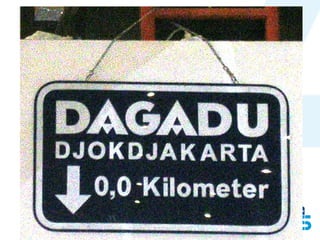
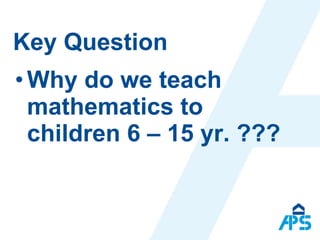
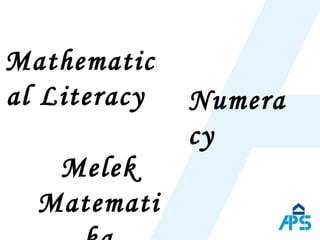
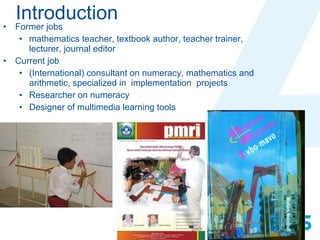
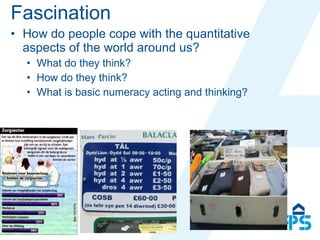

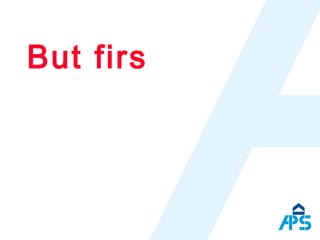
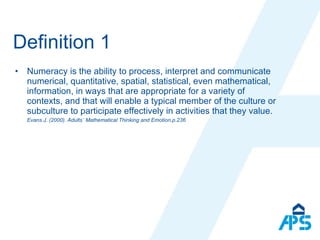
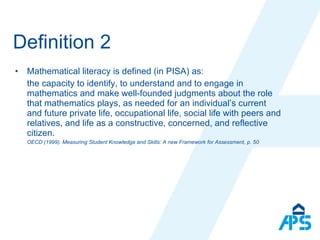
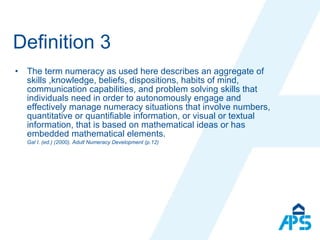
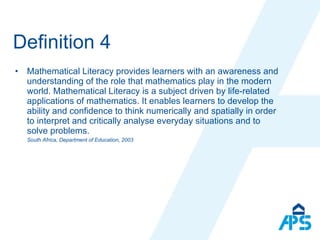
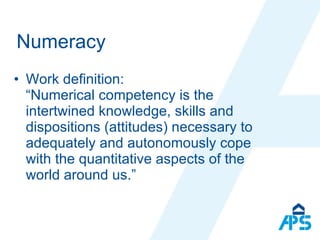



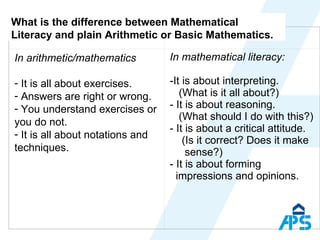
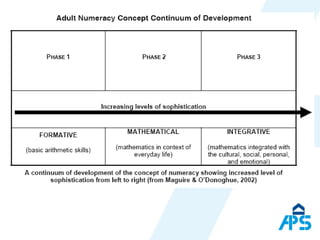
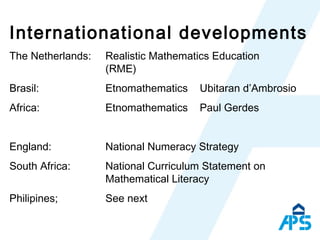
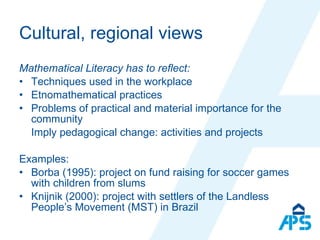
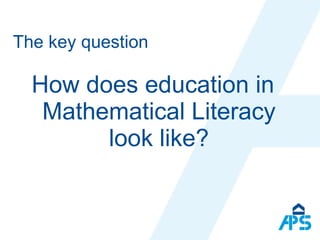
![Do you want a digital copy of this presentation, please send an e-mail to: [email_address] Or look at the website: www.mathematical-literacy.eu](https://image.slidesharecdn.com/gc20071102palembangmastersprogrammelekmatematika-12585673463188-phpapp02/85/Gc-2007-11-02-Palembang-Masters-Program-Melek-Matematika-21-320.jpg)